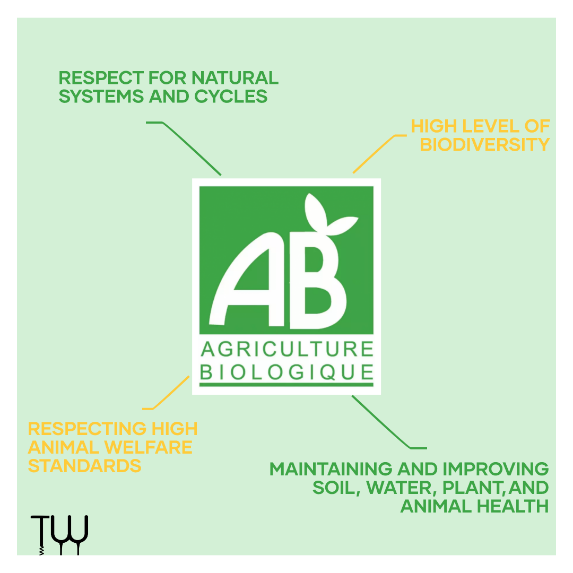
High environmental value (HEV) corresponds to the highest level of a more general system of environmental certifications for farms.
A farm environmental certification is a voluntary approach that aims to identify and promote particularly environmentally friendly practices applied by farmers. HEV covers four key areas: biodiversity conservation, plant protection strategy, management of fertilizer use, and water management.
To engage the whole agricultural sector in an approach focused on environmental progress, it is designed based on the certification of the entire farm at three levels.
The third or "high environmental value" level is based on performance indicators. Farm certification, which enables farmers to label products with a value statement "from farms certified as having a high environmental value," guarantees a high level of environmental performance.
Being HEV certified means reaching level 3 of environmental certification. The system is based on obligations to achieve results measured by environmental performance indicators. Producers can choose a thematic approach (four modules to be confirmed: biodiversity, plant protection, fertilization, and irrigation), or a global approach (the weight of inputs, particularly plant protection treatments, must be less than 30% of turnover, and agro-ecological infrastructures such as grassed strips, hedges, and ponds must exceed 10% of the farm's useful agricultural area).
What is the difference between AB label and HEV certification?
Organic production attests to environmental excellence at all stages, through implementation of practices guaranteeing, especially the absence of the use of synthetic chemicals and GMOs. Organic production includes respect for natural systems and cycles, maintaining and improving soil, water, plant, and animal health, contributing to a high level of biodiversity, and respecting high animal welfare standards.
HVE certification attests to environmental excellence translated by the achievement of performance thresholds in 4 areas: biodiversity (presence of agro-ecological infrastructures on the farm such as hedges, grassy strips, groves...), phytosanitary strategy, fertilization management, and irrigation.
HEV certification in France
As of July 1st, 2022, 29,898 farms have been HEV certified. The number of certified farms has continued to rise to 56% in 1 year (+10, 700 farms.). During the first half of 2022, 5.,071 farms have been certified. This is less than the six previous months (+5.,611 farms in the second half of 2021.).
As of July 1st, 2022, certified farms represented 7.7% of French farms and cover at least 3.9 million acres.
HEV certification has been dynamic in certain regions: East North (+1,.107), New Aquitaine in the west (+1,.023 farms), and Occitanie in the South (+995). Occitanie is the leader of HVE in France with 23.,6% farms HEV certified farms in France, in front of the Northeast (20,.5%) and New Aquitaine (20,.03%) which was in the first place in 2021.
At Terrisson Wines, we have HEV-certified producers, who are they?
JM Cazes Family owns several HEV certified domains:
1. Michel Lynch – Bordeaux/South West
Born in 1754, Michel Lynch devoted his life to improving the wines on his Lynch-Bages property. A shrewd wine producer, he was one of the prime movers in the viticultural advances at the end of the 17th century, in particular with the early trials of de-stemming (separating the stalk and pips) before fermentation, which subsequently became widespread in Médoc. Two centuries later, his memory lives on in the name Château Lynch-Bages. And in 1986 the vineyard’s owner, Jean-Michel Cazes, created a new range of quality wines that also bears his name. Michel Lynch is a selection of wines that faithfully reflect the full diversity and wealth of Bordeaux’s vineyards. They are wines intended for amateurs wanting to immediately enjoy a wine embodying the finesse and richness typical of the region.
2. Domaine de L’Ostal – Languedoc- Roussillon
In a protected environment, among green oaks and cypress trees, the region has everything it takes to make great wines. In 2002, Jean-Michel Cazes created an estate of 150 ha, of which 60 ha are planted with vines and 25 ha with olive trees, on the slopes of the “Petit Causse”. The estate underwent complete restructuring: drainage works and planting the varietals according to the potential and type of terroir in each parcel. In the ancient language of Oc, “Ostal” means both the family group and the house where they live.
3. Domaine des Sénéchaux – Southern Rhône Valley
The ancient vineyard of Châteauneuf-du-Pape became world famous when the Popes settled in Avignon in 1350. It later became the first French appellation d’origine contrôlée in 1933 under the influence of Baron Le Roy. Lying in the heart of this illustrious appellation, the 14th-century Domaine des Sénéchaux is among the region’s oldest wineries. It gets its name from one of the estate’s principal plots, located in the “Bois Sénéchaux” neighborhood.
-
Château Villa Bel-Air – Bordeaux/South West
Located in the central part of the Graves appellation, Château Villa Bel-Air is perched at the top of a gently sloping, gravelly hillside with an ideal microclimate for vine growing. This beautiful chartreuse was built in the XVIII century by an advisor to the Bordeaux parliament, Louis Dufaure, Marquis of Lajarte. Louis was one of the era’s great architects and designed this traditional Gironde ‘’chartreuse’’. Towards the end of the XIX century, the chartreuse and its vineyards were given a new lease of life. The owner at the time, Honoré Zappa, an aesthete, and wine merchant in Bordeaux, designed the beautiful gardens complete with a water feature and several Italian-inspired sculptures. In 1988, the estate was bought by the Cazes family who immediately began a comprehensive restructuring of the vineyards and technical facilities. Inspired by the spirit of the property and its Italian roots, Jean-Michel Cazes gave the Château its definitive name ‘’Villa Bel-Air’’. Finally, in 2017, this beautiful 18th-century estate was bought by the family of Armand Ballande and benefits from the most advanced winegrowing techniques, while remaining true to the ancestral traditions. The team is advised by Derenoncourt Consultants and has set itself the goal of benefitting from the terroir’s exceptional capacity and continuing to deliver all its potential by producing a white and red wine that exemplifies all the finesse and complexity of Graves wines.
5. Pauillac de Lynch-Bages – Bordeaux/South West
Situated on the outskirts of Pauillac, overlooking the Gironde estuary, the Lynch-Bages vineyard (1855 Grand Cru Classé) stretches over a beautiful gravelly hilltop. Formerly owned by the illustrious Lynch family, of Irish descent, the estate was acquired by the Cazes family in 1939.
6. Saint-Estèphe d’Ormes de Pez – Bordeaux/South West
Château Ormes de Pez belongs to the Médoc landscape since the 18th century. Located West of Saint-Estèphe and bordering the hamlet of Pez, the estate owes its name to a magnificent grove of elm trees, which no longer exists today. Château Ormes de Pez is the second property – after Château Lynch-Bages – acquired by the Cazes family in 1939.



32 Rue Robert Mallet Stevens
30900 Nîmes - FRANCE
+33 (0)4.66.23.44.22










